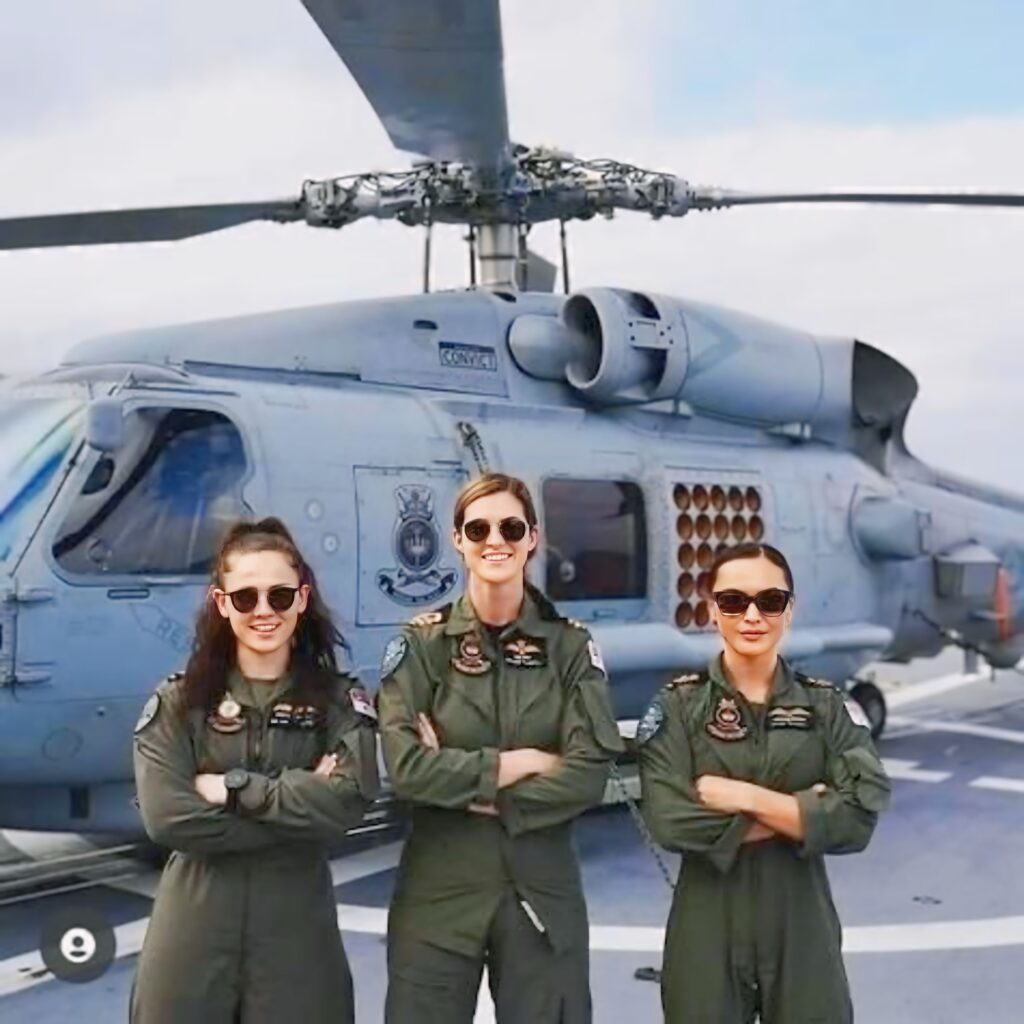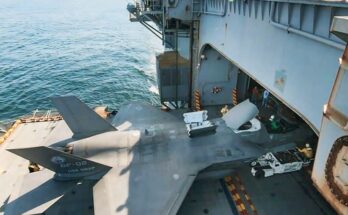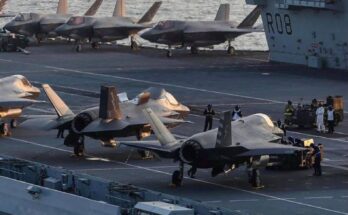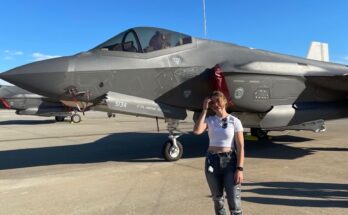
In January 2021, the Royal Australian Navy (RAN) marked a significant milestone in its aviation history when an MH-60R Seahawk helicopter was flown by an all-female crew for the first time. Operating out of HMAS Albatross, the Navy’s Fleet Air Arm base in Nowra, New South Wales, the flight brought together three highly trained women who had each earned their place in one of the most demanding roles in naval service.
The crew consisted of Lieutenant Rhiannon Thomson as the pilot, Lieutenant Hannah Best as the Aviation Warfare Officer, and Leading Seaman Clare Lassam as the Sensor Operator. Each role represents a vital part of Seahawk operations. The pilot is responsible for flying and maneuvering the aircraft; the Aviation Warfare Officer manages mission systems, tactics, and coordination with other naval assets; and the Sensor Operator monitors sonar, radar, and other equipment to detect and track potential threats. Together, these positions form the backbone of the MH-60R’s mission capability.
Their achievement was not a staged event but part of routine squadron operations within 725 Squadron, which trains and operates the Seahawk Romeo. The MH-60R is the most advanced maritime helicopter in service with the RAN, tasked with anti-submarine warfare, anti-surface warfare, search and rescue, and logistics support. The fact that this milestone occurred during a normal flight underlines the steady integration of women into all aspects of naval aviation.
While women have served in the Royal Australian Navy for decades, representation in front-line aviation roles has historically been limited. Helicopter operations, particularly those involving combat support and maritime warfare, demand extensive training, long deployments, and mastery of advanced technology. For many years, female personnel in such positions were rare. That reality has gradually shifted as the Defence Force has committed to encouraging diversity and removing barriers to service.
Lieutenant Thomson noted at the time that, when she began her training, there were few female pilots to look up to. The visibility of this all-female aircrew demonstrated how far opportunities had expanded and provided a new set of role models for the next generation of aviators. For Lieutenant Best and Leading Seaman Lassam, the milestone highlighted the importance of teamwork, showing that capability and professionalism—not gender—determine success in naval aviation.
The MH-60R Seahawk itself provides an impressive backdrop for such a milestone. Introduced into RAN service in 2014, the Romeo replaced older Seahawk models and brought cutting-edge systems to the fleet. With advanced dipping sonar, sonobuoy launchers, radar, electronic support measures, and the ability to deploy Mk 54 torpedoes and Hellfire missiles, the Seahawk Romeo is central to Australia’s maritime security strategy. Its crews are trained to operate in high-risk environments, coordinating with surface ships, submarines, and aircraft to protect Australia’s waters and support allied operations.
The 2021 flight may not have been a combat mission, but its significance reached far beyond a routine training sortie. It stood as a symbol of progress in the Australian Defence Force’s journey toward inclusivity and equity. By proving that an all-female crew could take the controls of one of the Navy’s most advanced aircraft and perform their duties with skill and professionalism, the flight helped normalize female participation at every level of naval aviation.
Ultimately, the event was about more than just making history. It demonstrated the evolving face of the Royal Australian Navy: one where opportunity is based on merit, where women play a full role in defense capability, and where milestones like this become the norm rather than the exception.


